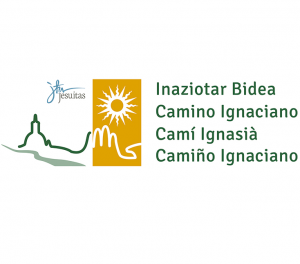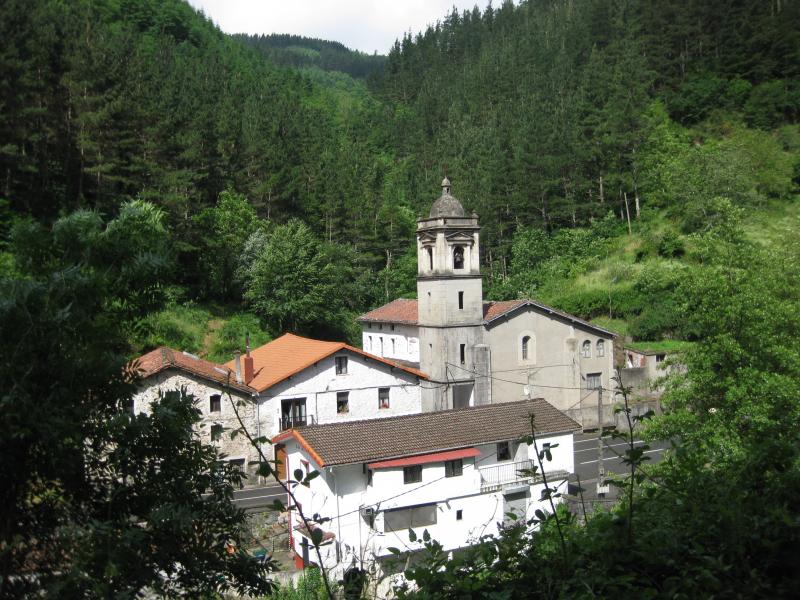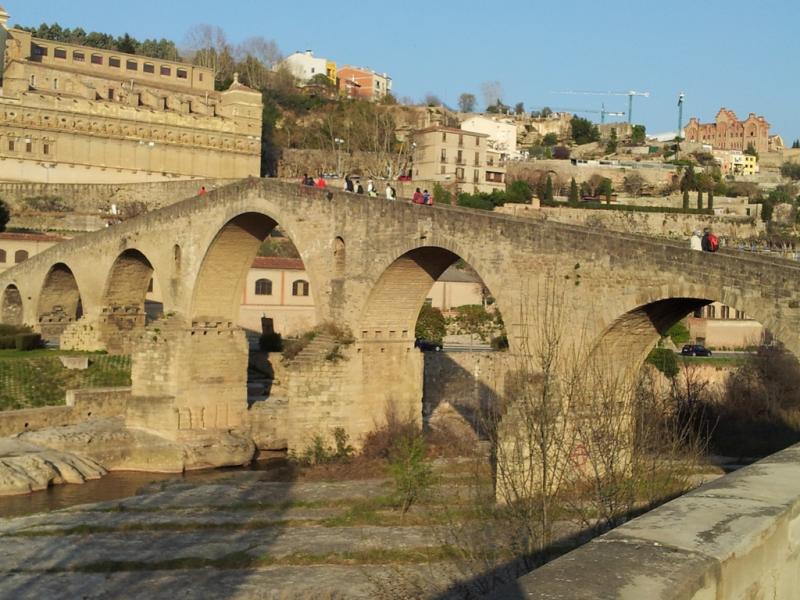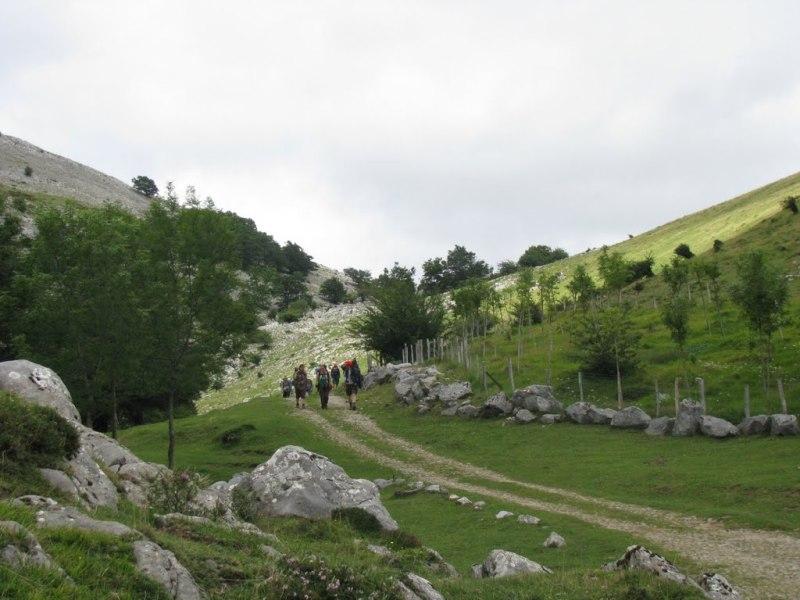06/08/2016
Following the Steps of Ignacio de Loyola

One of the main goals of most of the Jesuit inspired institution and works is to follow the footsteps of St Ignatius; this said in terms of his spirituality and way of life; but there is one initiative that really goes beyond this, and gives the persons who joins it the opportunity of really reliving the footsteps of the Society of Jesus´ founder in a literal way: The “Camino de Ignacio”.
Objectives
The “Camino de Ignacio” is a pilgrimage type activity, designed in 2011 to relive Ignacio de Loyola´s experiences trough a pilgrimage inspired in:
- The huge Success of “Camino de Santiago” pilgrimage, which started in the 1970s with 150 to 400 pilgrims and between 2010 and 2014, counted with 230.000.
- Ignacio de Loyola, was a pilgrim himself, as expressed in the words of Fr. Pedro Miguel Lamet sj in his work, “El Caballero de las Dos Banderas”, Ignacio de Loyola: “The secret of Ignatius was no other, in a sense, than the long hours and days and months in the profound silence under the banner of his greater Captain and lord of ours. On his recondite tenderness weighed the long walks of one of the greatest walkers of his time, his nights at the haystacks and under the stars, his internal landscapes and his many days united to the endless and lonely road. Walking he must have learnt plenty of things. But most of all, he once again he savored and concreted that internal light of Manresa, which far from extinguishing, was getting closer with the maturation of the years…”
- This could be used as an alternative tool for spreading the Jesuit spirituality, amongst those in the search of personal transformation. For most of the participants in this type of activities, pilgrimages offer the following [1]:
A liberating change
An experience of life
A change in priorities
A metaphor of life
Most of the are willing to return
- Can be a strategic tool for the positioning of Ignatius and the Society of Jesus
This Jesuit work is basically a walkthrough on the live and voyages of Saint Ignatius, since his beginnings as Iñigo López de Loyola, his life changing experiences, which transformed him into San Ignacio, and the milestones of his main spiritual travels.
The path walked
In 2011 the first rout and website were designed and the first pilgrims took part, a year later the rout was signaled for the first time and there was a presentation of the same, through diverse meetings with local authorities. In 2013 the Pilgrim of the Ignatian Way and Apostolic Work “El Camino de Ignacio” Office was created, and began the action of pilgrimage organizing groups.
In 2014 the Ignatian way counted with improved website and signaling, but timid promotion, leading to introduce in 2015 the publication of a guide, and an open international promotional strategy, under a strict commitment from the administration.
Present steps, Feeling His presence in every step
In 2015 the “Camino de Ignacio” reached the total of 1013 pilgrims, which during that year where mostly between the ages of 13 and 65, with a good presence of teenagers (13 to 18).
One of those pilgrims, Terry Howard, says that «No book or seminar can substitute the pure experience of following the steps of Saint Ignatius alone and by foot. During my pilgrimage I developed a special sense: I felt I was walking aside Him, viewing the places and the dirt roads that he walked, along the same route that he did, and I felt capable of explaining the changes of the modern world, as if I were his eyes today, making present his history of the past. »
The Route

Loyola: Birth Place of Ínigo López / Provided by: http://caminoignaciano.org/
The Camino de Ignacio is a perfect plan for those who wish to get away from their daily “earthly” worries and occupations, and get in touch with God, nature, history, and themselves. There is a route designed to satisfy each taste.
For those who want to focus on the history, the recommended route is the “History: Autobiographical Route”, which is based on the first pilgrimage Iñigo made from Loyola to Manresa, after having the “cannonball” breakpoint.
For others who want to get a more spiritual immersive experience, the route to take is the “Piousness: The Spiritual Path, The Route of the Six Sanctuaries”, which consists on a four-week travel, also between Loyola and Manresa, but stopping at six spiritual landmarks: Loyola, El Pilar (Zaragoza), San Pedro Claver (Verdu), Arantzazu and Manresa.

Manresa: Walk from Monserrat to Manresa, pilgrimage of Ignacio prior to the writing of the Spiritual Exercises / Provided by: http://caminoignaciano.org/
A third option is available for those who have a love for landscapes and culture; the “Culture and Landscape: Route of the Rising Sun”, which offers the possibility of visiting the Spanish landmark towns of: Euskadi, La Rioja, Navarra, Aragon and Catalunya.

Euskadi: Walk from Zumarraga to Arantzazu (19,2 km) / Provided by: http://caminoignaciano.org/
Some Practical Info
- All routes can be made in different means of transport, foot or bike, being the recommended by foot, because it offers more time to enter in a contemplative state.
- The recommended time for the pilgrimage is either spring or fall.
- A certificate if offered for those who take part in the pilgrimage.
- For all the practical information, visit: http://caminoignaciano.org/, the official website of the “Camino de Ignacio” organizers, which is available in Spanish, Catalan, Euskara, English, French, German and Italian.
The Camino the Ignacio is definitely one of the best ways to relive the Ignatian legacy and to live the Jesuit Spirituality, and the best excuse to escape and allow oneself to be: “Contemplative in Action”.
[1] Font: LOPEZ, Lucrezia (2013) La Imagen de Santiago de Compostela y del Camino en Italia. Una aproximación desde la geografía cultural. Universidad de Santiago de Compostela. Elaboración propia.


